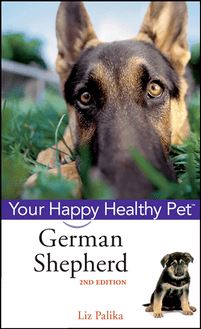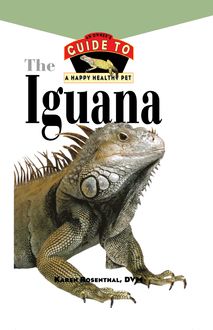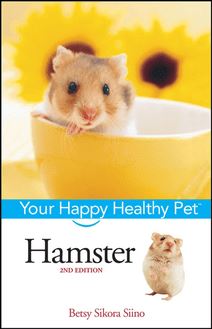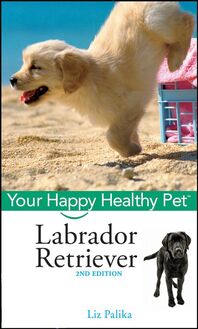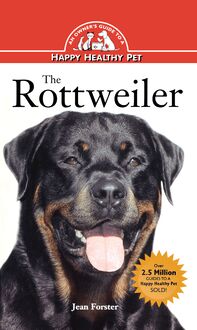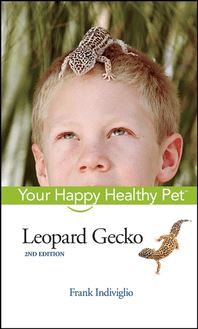Pomeranian , livre ebook
116
pages
English
Ebooks
2007
Vous pourrez modifier la taille du texte de cet ouvrage
Obtenez un accès à la bibliothèque pour le consulter en ligne En savoir plus
Découvre YouScribe en t'inscrivant gratuitement
Découvre YouScribe en t'inscrivant gratuitement
116
pages
English
Ebooks
2007
Vous pourrez modifier la taille du texte de cet ouvrage
Obtenez un accès à la bibliothèque pour le consulter en ligne En savoir plus
Publié par
Date de parution
20 août 2007
Nombre de lectures
0
EAN13
9780470252710
Langue
English
Poids de l'ouvrage
2 Mo
- Expert authors, plus renowned guest contributors on specialized topics
- Full-color photos throughout
- Basic information on the breed, species, or topic
- Complete coverage of care, health, grooming, training, and more
- Tips and techniques to make life with a pet more rewarding
PART ONE: Welcome to the World of the.
Pomeranian.
1. What Is a Pomeranian?
2. The Pomeranian's Ancestry.
3. The World According to the Pomeranian.
PART TWO: Living with a Pomeranian.
4. Bringing Your Pomeranian Home.
5. Feeding Your Pomeranian.
6. Grooming Your Pomeranian.
7. Keeping Your Pomeranian Healthy.
PART THREE: Enjoying Your Dog.
8. Basic Training (Ian Dunbar, Ph.D., MRCVS).
9. Getting Active with Your Dog (Bardi McLennan).
10. Your Dog and Your Family (Bardi McLennan).
11. Your Dog and Your Community (Bardi McLennan).
PART FOUR: Beyond the Basics.
12. Recommended Reading.
13. Resources.
Publié par
Date de parution
20 août 2007
Nombre de lectures
0
EAN13
9780470252710
Langue
English
Poids de l'ouvrage
2 Mo
The
Pomeranian
Howell Book House
Howell Book House A Simon Schuster Macmillan Company 1633 Broadway New York, NY 10019
Copyright © 1996 by Howell Book House All rights reserved. No part of this book may be reproduced or transmitted in any form or by any means, electronic or mechanical, including photocopying, recording, or by any information storage and retrieval system, without permission in writing from the Publisher.
MACMILLAN is a registered trademark of Macmillan, Inc.
Library of Congress Cataloging-in-Publication Data Jones, Happeth. The pomeranian : an owner’s guide to a happy, healthy pet / Happeth Jones. p cm. ISBN: 0-87605479-3 1. Pomeranian dogs. I. Title SF429.P8J64 1996 636.7’6—dc20 96-193 CIP
Manufactured in the United States of America 10 9 8 7 6 5
Series Director: Dominique De Vito Series Assistant Directors: Ariel Cannon, Sarah Storey Book Design: Michele Laseau Cover Design: Iris Jeromnimon Illustration: Jeff Yesh Photography:
Front and back cover Photos by Paulette Braun/Pets by Paulette
Courtesy American Kennel Club: 17, 18
Marcia Adams: 57
Joan Balzarini: 96
Mary Bloom: 23, 96, 136,145
Paulette Braun/Pets by Paulette: 8, 11, 12, 16, 20, 27, 34–36, 39, 47, 64, 58, 93
Buckinghamhill American Cocker Spaniels: 148
Sian Cox: 134
Dr. Ian Dunbar: 98, 101, 103, 111, 116–117, 122–123, 127
Happeth Jones: 14, 28, 53
Dan Lyons: 96
Cathy Merrithew: 129
Julie Moreno: 45
Liz Palika: 133
Cheryl Primeau: 2–3, 7, 26, 29, 30, 37, 40, 42, 51, 85
Janice Raines: 132
Sarah Storey: 54–56
Judith Strom: 22, 43, 96, 107, 110, 128, 130, 135, 137, 139–140, 144, 149–150
Toni Tucker: 5
Kerrin Winter Dale Churchill: 96–97
Zuma Press: 24, 61, 71
Production Team: Trudy Brown, Jama Carter, Kathleen Caulfield, Trudy Coler, Amy DeAngelis, Pete Fornatale, Matt Hannafin, Vic Peterson, Terri Sheehan and Marvin Van Tiem III.
Contents
part one
Welcome to the World of the Pomeranian
1 What Is a Pomeranian?
2 The Pomeranian’s Ancestry
3 The World According to the Pomeranian
part two
Living with a Pomeranian
4 Bringing Your Pomeranian Home
5 Feeding Your Pomeranian
6 Grooming Your Pomeranian
7 Keeping Your Pomeranian Healthy
part three
Enjoying Your Dog
8 Basic Training by Ian Dunbar, Ph.D., MRCVS
9 Getting Active with Your Dog by Bardi McLennan
10 Your Dog and Your Family by Bardi McLennan
11 Your Dog and Your Community by Bardi McLennan
part four
Beyond the Basics
12 Recommended Reading
13 Resources
part one
External Features of the Pomeranian
chapter 1
What Is a Pomeranian?
Ask Pomeranian owners the above question and most will answer: “The little dog who thinks it can.” There he stands, all of five pounds, and thinks he’s fifty-five. Breeders may have made the Pom’s body smaller but they didn’t reduce his self-image, and today’s Pom thinks he’s still a large dog. The elements that make up this little ball of fluff with the big personality involve his ancestry, which you can read about in Chapter 2 ; his personality, which Chapter 3 explores more fully; and the official “breed standard.”
What Is the Standard and Why Do We Need It?
All purebred dogs are created artificially. When man discovered that he had more to eat because his floppy-eared, liver-and-white dog pointed at quail, he conscientiously bred to retain these traits. Selective breeding is how every purebred dog got its start, but breeders, being human, did not all agree on what traits to reproduce. Different owners would make parentage choices that had the potential to drastically change or hinder the development of the breed. For instance, in making the Pom smaller, breeders would mate small size to small size, but some considered fifteen pounds small and others, five pounds. Therefore, in order to create and preserve the breeds, the producers needed guidance as to what traits, structure and type to cultivate.
WHAT IS A BREED STANDARD?
A breed standard—a detailed description of an individual breed—is meant to portray the ideal specimen of that breed. This includes ideal structure, temperament, gait, type—all aspects of the dog. Because the standard describes an ideal specimen, it isn’t based on any particular dog. It is a concept against which judges compare actual dogs and breeders strive to produce dogs. At a dog show, the dog that wins is the one that comes closest, in the judge’s opinion, to the standard for its breed. Breed standards are written by the breed parent clubs, the national organizations formed to oversee the well-being of the breed. They are voted on and approved by the members of the parent clubs.
They acquired the needed guidance by forming organized breed clubs. Members of these clubs then compiled written descriptions, called breed standards, of the perfect representative of their breed. Early breeders used these standards as blueprints for their breeding programs, and with few revisions, they are still used today. Many local clubs represent a breed, but only the national breed club, called the parent club, decides standard revisions. In the United States, the American Pomeranian Club is the parent club that guards the breed ideal for the Pomeranian.
The breed standard depicts the perfect dog—a concept to work for—it doesn’t mean something is wrong if your pet doesn’t perfectly fit the ideal. Even top show dogs don’t measure up to the model in every way. So if your Suzie-Q has ears like a jackrabbit, and the Standard calls for tiny ears, don’t get upset; she’s as good as any other Pom, but to preserve breed type you wouldn’t mate her to a dog that also sported jackrabbit ears. Remember, if breeders mated purebred dogs indiscriminately, breed types would disappear.
Studying the Standard
Since the Pomeranian is a companion dog, the standard ranks temperament and appearance high in importance. It also calls for soundness. As a smaller version of the Nordic dog, the Pomeranian, if enlarged, should be able to pull a sled and work in snow. The standard is in italics, and the author’s comments follow.
The Pomeranian has an alert, intelligent expression.
I. GENERAL APPEARANCE The Pomeranian in build and appearance is a cobby, balanced and short-coupled dog. He exhibits great intelligence in expression and is alert in character and deportment.
This section calls for a cobby, balanced dog, but it may leave you wondering what cobby means or how to define balance. A cobby dog is as long or shorter than he is tall; try to picture him as a circle in a square. A balanced Pomeranian fits together logically and in proportion. For instance, a small, delicately boned Pom with a large, coarse head looks unbalanced because his head type doesn’t match his body type. A balanced Pom displays legs in proportion to his body: neither so short as to make him appear dumpy nor so long as to make him look like he is walking on stilts.
The general appearance segment also calls for an expression that imparts great intelligence. It tells us the Pom has an alert character and that he behaves accordingly. A stupid or dull Pom would not make a good comrade, so intelligence is an essential trait for this breed. His alertness not only makes him a superb watchdog, but adds to the “I’m special” attitude he exhibits.
II. SIZE, PROPORTION AND SUBSTANCE: Size The weight of the Pomeranian for exhibition is from three to seven pounds. The ideal size for show specimens is four to five pounds.
Proportion The Pomeranian in build and appearance is a cobby, balanced, short coupled dog. The legs are of medium length in proportion to a well balanced frame.
Substance The body is well ribbed and rounded. The brisket is fairly deep and not too wide.
The standard calls for a dog that weighs from three to seven pounds. This broad weight range allows a dramatic difference in appearance to occur between a three-pounder and a seven-pounder. According to the standard both sizes are equal. The preferred weight of the Pom is in the middle of these two extremes—four to five pounds.
The Pomeranian’s thick coat reflects his Nordic ancestry.
The proportions of the Pomeranian make his look fit the circle-in-a-square image. Measure the length of the dog from his shoulders to the root of the tail and the height from the shoulders to the ground. A dog with proper proportion is as long, or shorter, than he is tall.
His chest, called the brisket, goes deep enough to reach the elbow. His well-rounded body is not too wide, but has substance.
III. HEAD Well proportioned to the body, wedge-shaped, with a fox-like expression.
Eyes Bright, dark in color, and medium in size, almond-shaped and not set too far apart nor too close together. Pigmentation around eye rims must be black, except self-colored in brown and blue.
Ears Small, carried erect and mounted high on the head placed not too far apart.
Skull Not domed in outline. A round, domey skull is a major fault.
Muzzle There is a pronounced stop with a rather fine but not snipy muzzle. Pigment around the lips must be black, except self-colored in brown and blue.
Bite The teeth meet in a scissors bite in which part of the inner surface of the upper teeth meet and engages part of the outer surface of the lower teeth. One tooth out of line does not mean an undershot or overshot mouth. An undershot mouth is a major fault.
Nose Pigment on the nose must be black, except self colored in brown and blue.
The standard calls for a wedge-shaped head but does not define the width of the wedge. Keep in mind that a narrow wedge makes the head look like a Sheltie’s and a wide wedge will give the Pom a Chow Chow appearance. The correct wedge falls in the middle range and helps keep the Pomeranian head from developing a dwarfing effect.
A side effect of breeding dogs down to a tiny size is the tendency for small dogs to take on dwarflike features, such as a flattened muzzle, bulging round eyes, domed heads, bowed legs and heavier bone. The developers of breeds l


